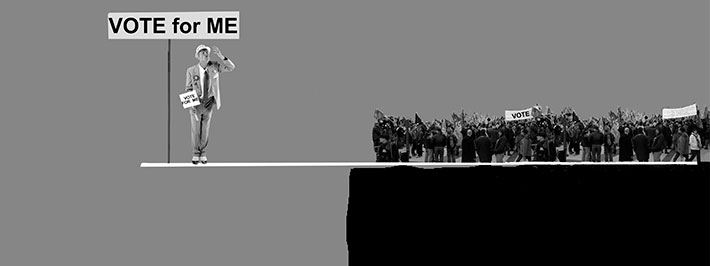
The three dimensions of electoral campaigns
A recent study indicated that negativity and emotionality significantly and substantially drive media coverage and election results: More positive and enthusiasm-based campaigns increase media attention, but so do campaigns based on personal attacks and scary appeals, especially during the presidential elections.
Very little is known about the nature and content of electoral campaigns, however the European Journal of Communication SAGE conducted a study of the electoral campaigns of candidates who have competed in elections around the world in three dimensions: negative campaign , emotional campaign and populist rhetoric. When looking at existing studies, mainly on the American case, three sets of communication strategies emerge: "negative campaign", that is, competing candidates attack their rivals instead of promoting their own program. The use of emotional appeals, where candidates use messages intended to provoke anxiety, anger, enthusiasm, and other emotions in those exposed to them. And the use of populist rhetoric promoting a vision of politics as a conflict between the pure people and the corrupt elite, often resorting to simplistic and demagogic language.
Media coverage responds in different ways to these strategies. The political system and its results increasingly depend on the coverage of political events provided by the media. Modern media are attracted to the most conflicting elements of politics. There is a lot of evidence that the media is characterized by greater negativity, in recent years, up to 80% of all news related to the US presidential election. USA they focused on negative ads (Geer, 2012). "The news, according to criticism among journalists, today is more affected by rumors, controversies and trivialities" (Plasser, 2005: 55). All this creates a situation in which preferential coverage is given to more offensive and aggressive campaigns. Candidates may make a positive announcement and try to influence voters, but the media will likely ignore it (Geer, 2012: 423)
A second related dimension of contemporary electoral campaigns is the use of appeals aimed at generating an emotional response in the audience, based on the assumption that emotions act as powerful determinants of behavior. A key difference is made between two basic sets of emotions: hope - enthusiasm on the one hand and fear - anxiety on the other. Eager citizens are likely to pay more attention to information and campaigns, making them easier targets for persuasion. Enthusiastic citizens, on the other hand, are more likely to invest and participate, but they do so by relying heavily on their previously held partisan beliefs and attitudes. Campaign messages capable of sparking those emotions, therefore, are particularly likely to be effective in getting your message across.
Third, a more recent stream of research focuses on populism not as an ideology, but rather as a style of communication and rhetoric, a framework of communication that engages, identifies with people, and seeks to speak on their behalf. Research on populist communication also discusses the additional element of using simpler, more informal language without overly technical terms. This rhetorical style is intended to create a sense of proximity between the candidate and the audience.
Although negative campaigns may appear to have greater reception, campaigns that carry hopeful and enthusiastic messages capture public attention by strengthening the resolve to participate. For example, Obama's 2008 "Hope" message, which quickly became the most visible and mediated feature of his election campaign. Emmanuel Macron; France's current president also appears to have played the card of positive emotion versus dark negativity from his opponent Le Pen.
Thus, it is observed that although the "most unpleasant" campaigns have the potential to boost media coverage, when observing electoral success, it is shown that negativity is a double-edged sword. The use of populist rhetoric in comparison with emotional and negative rhetoric has less impact both in terms of media coverage and electoral results.